
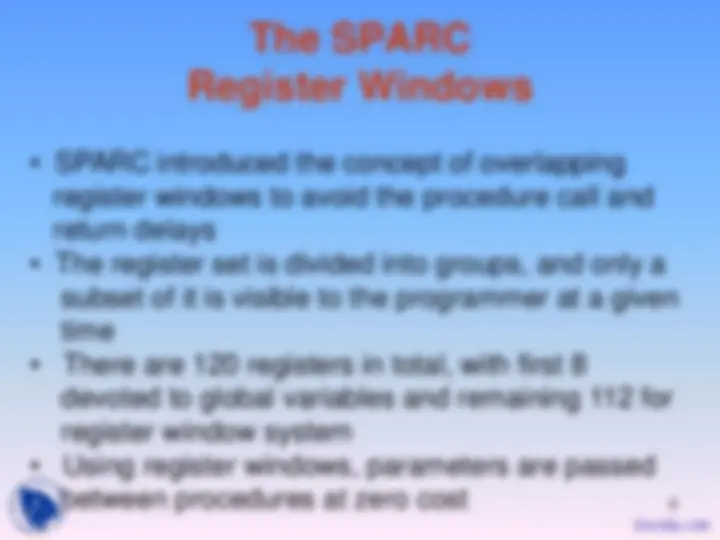
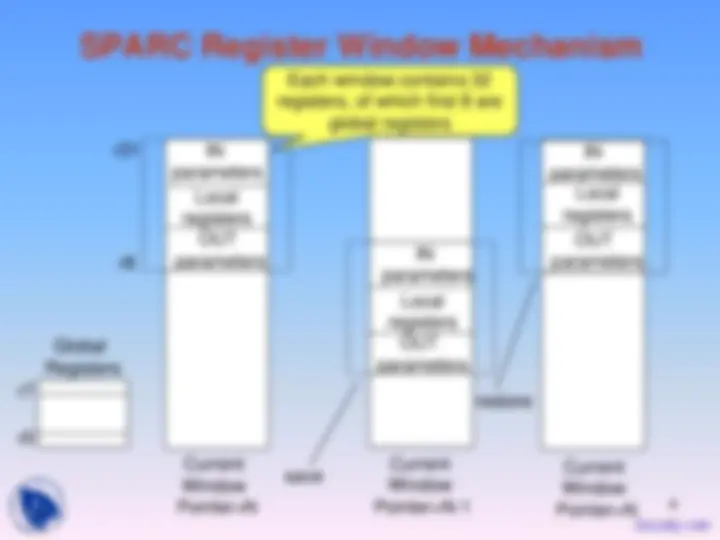
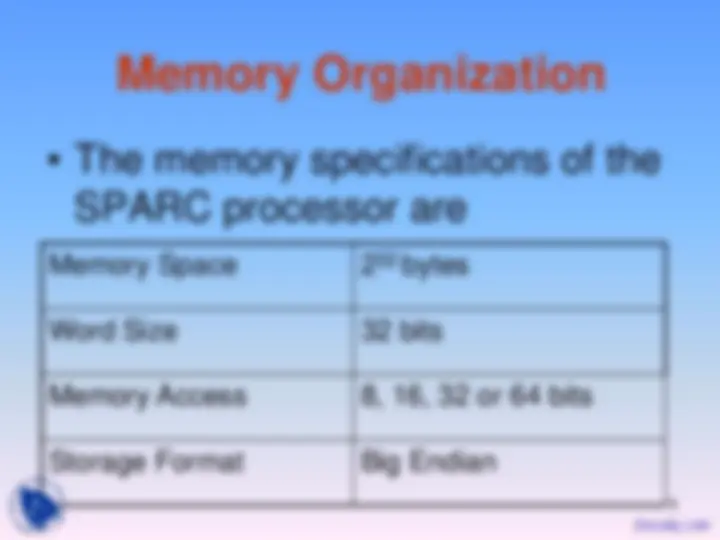
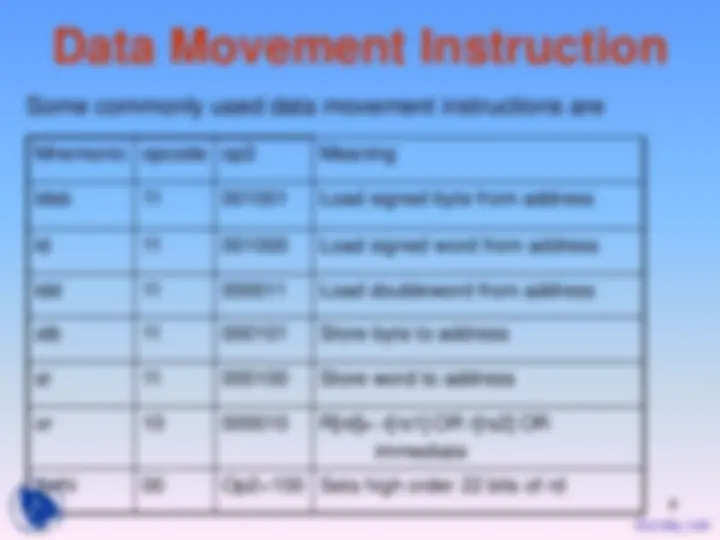
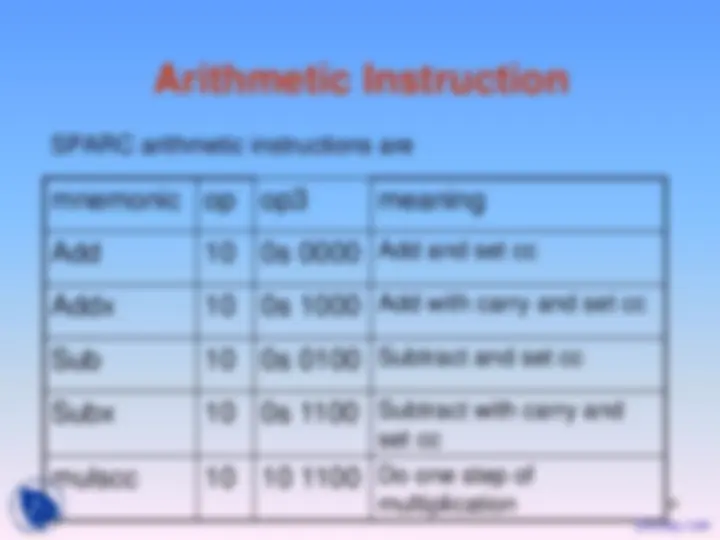
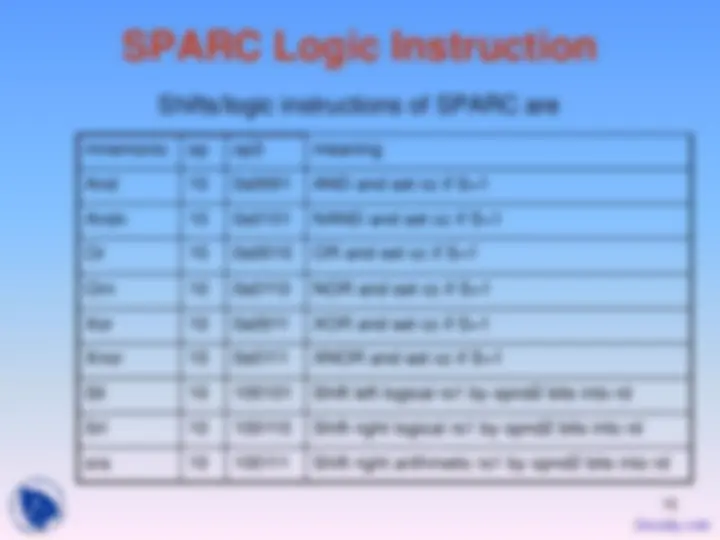
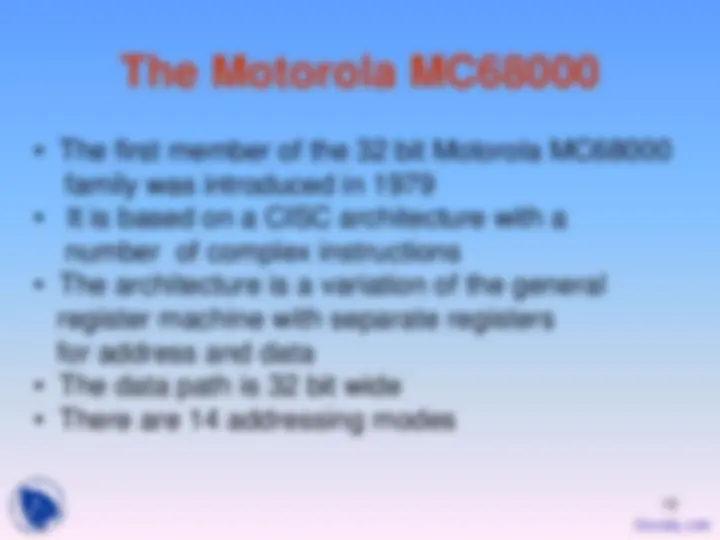
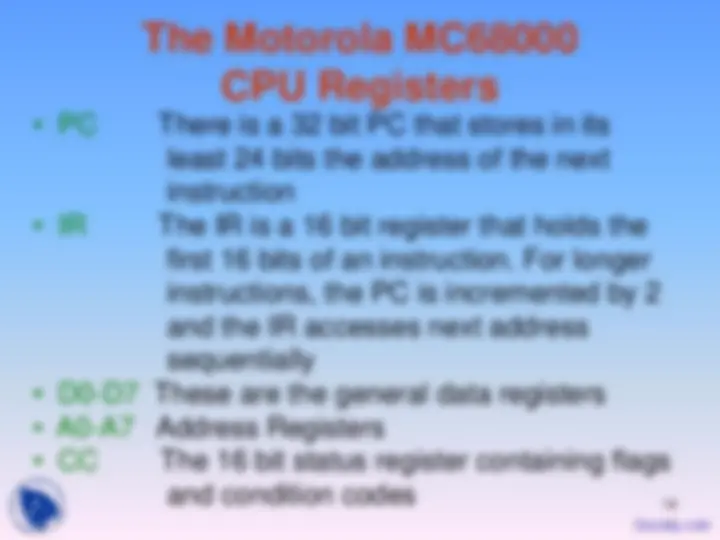
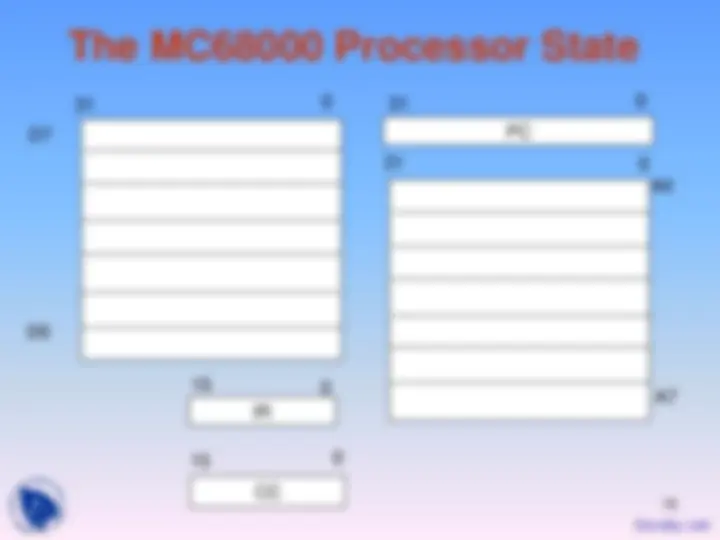
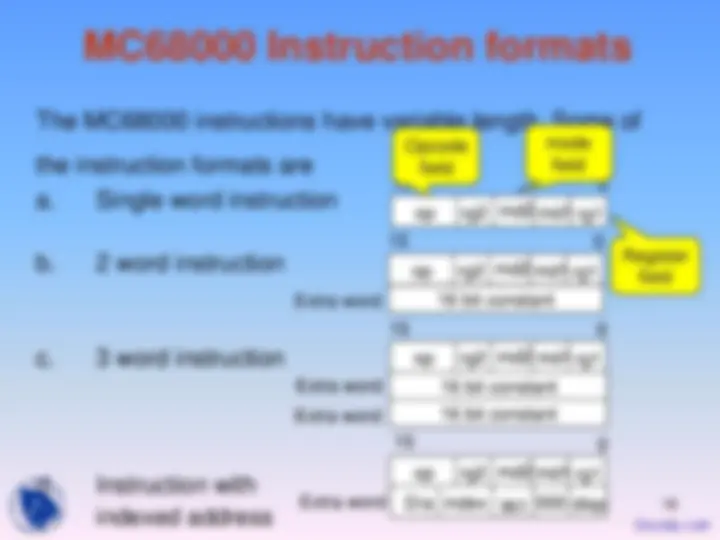
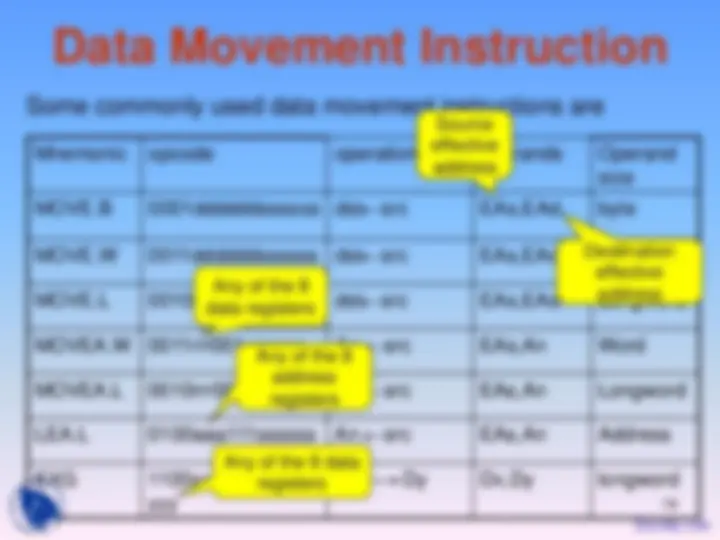
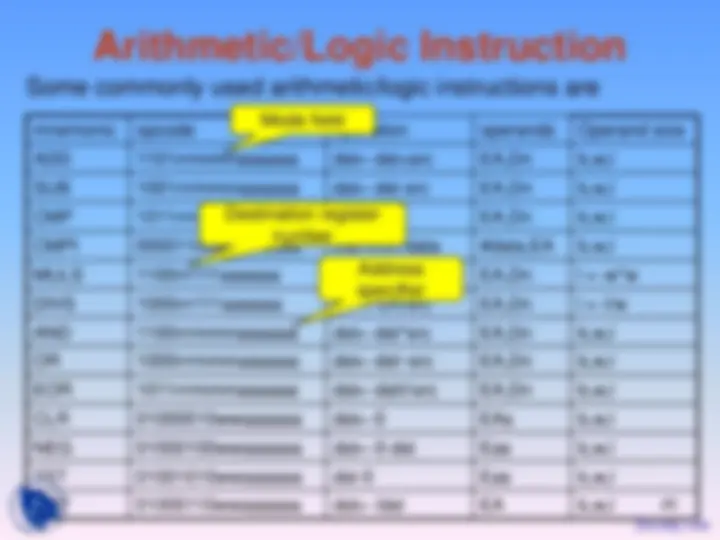
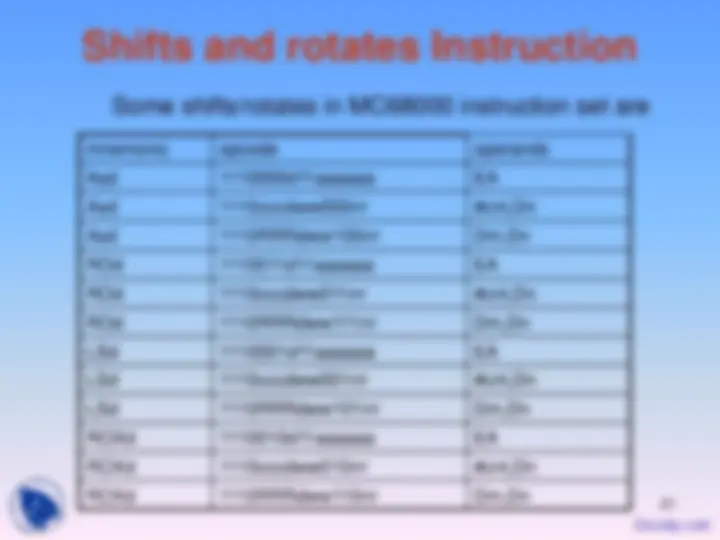
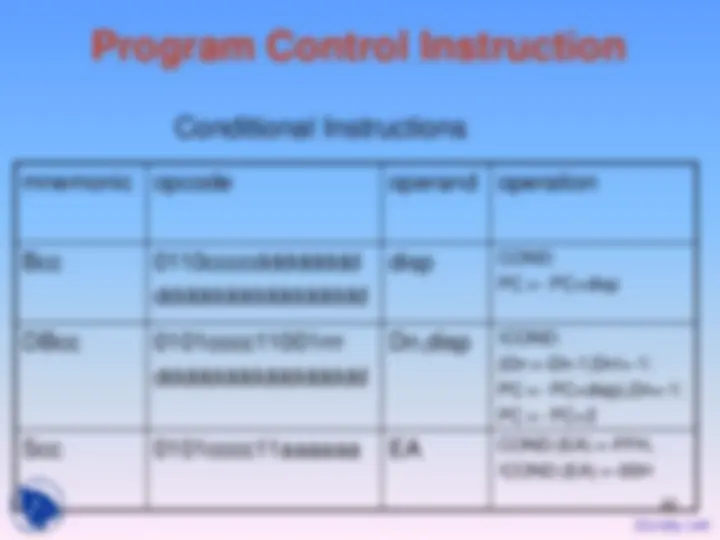
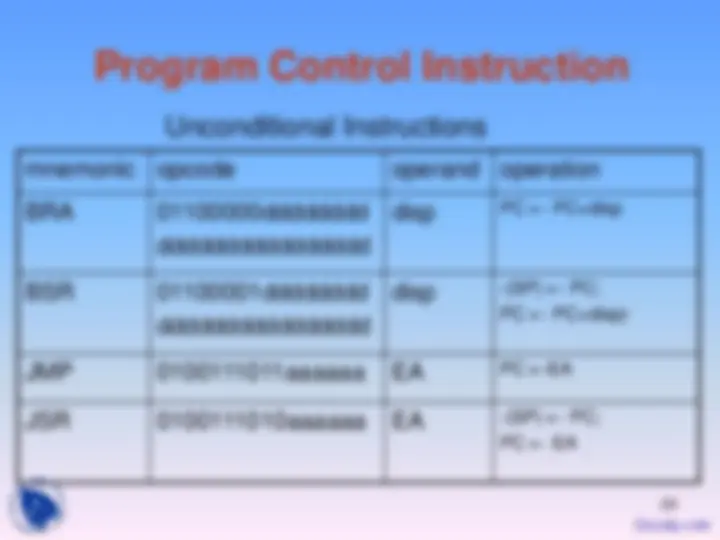
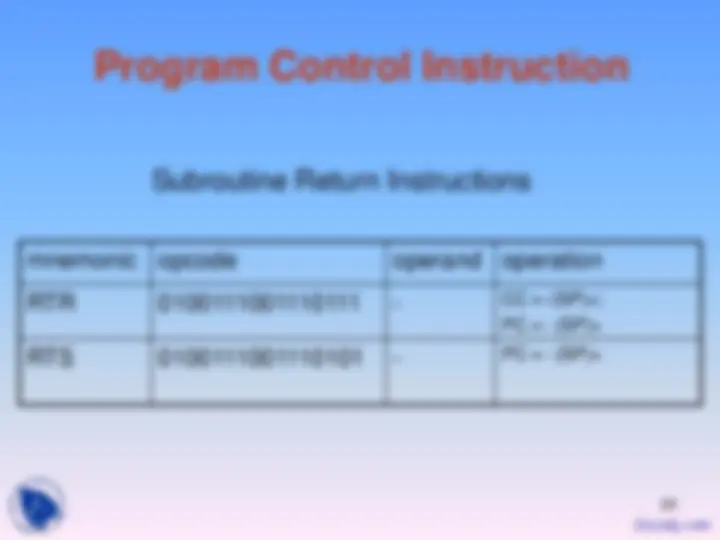
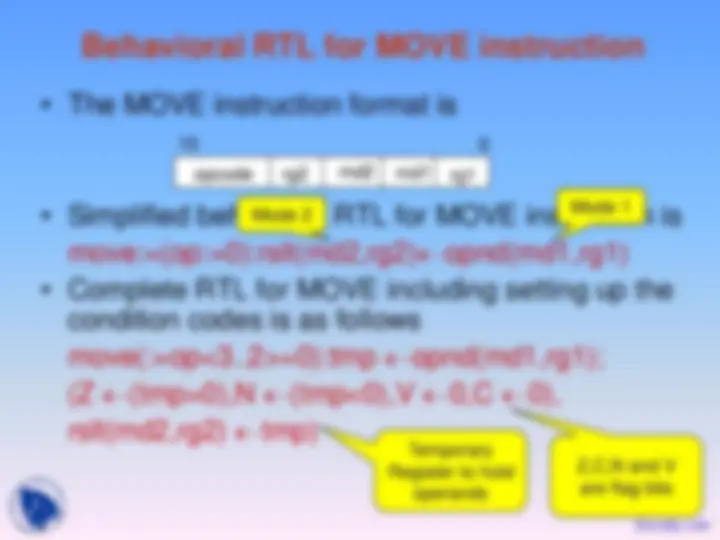
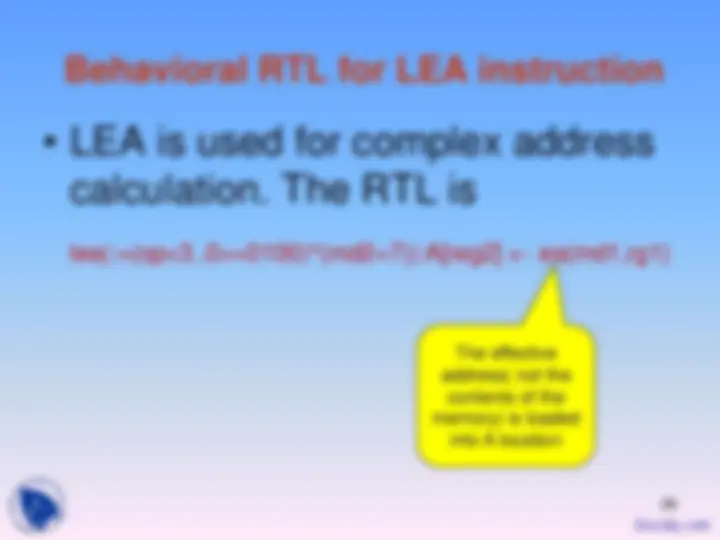
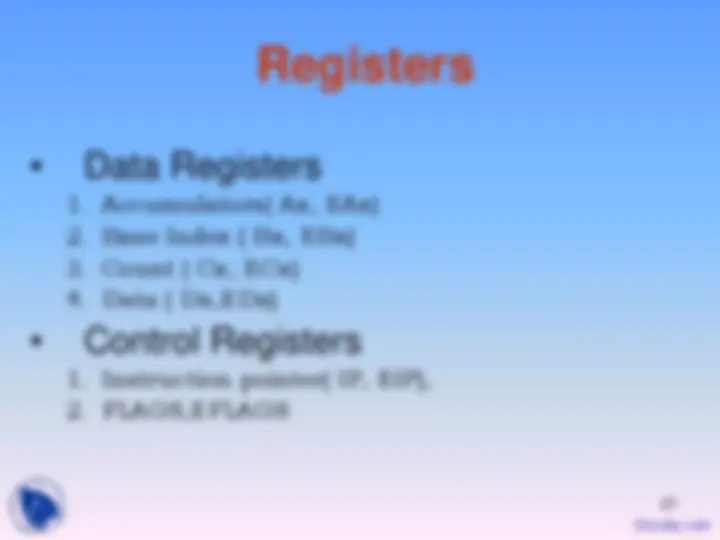
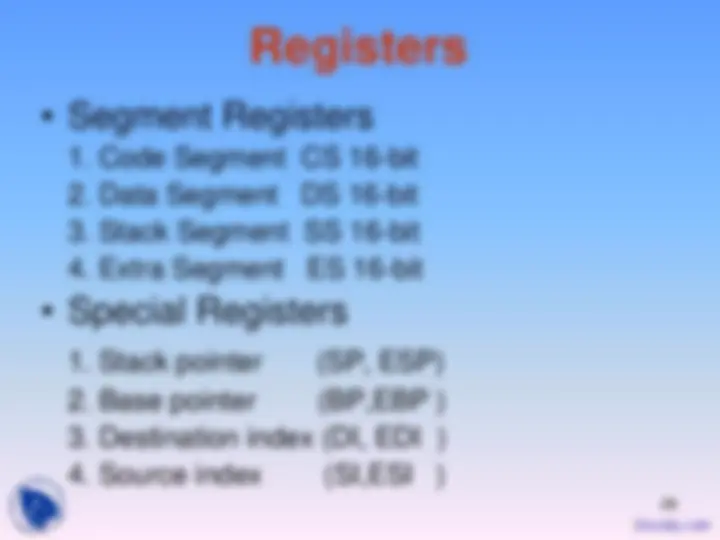
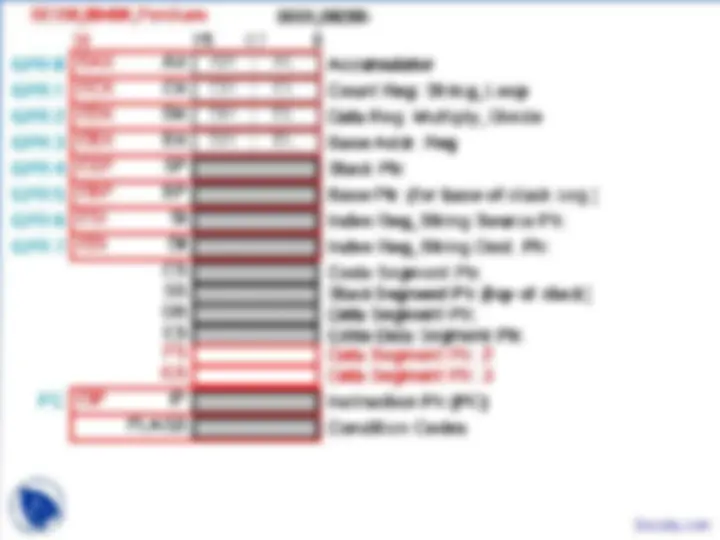
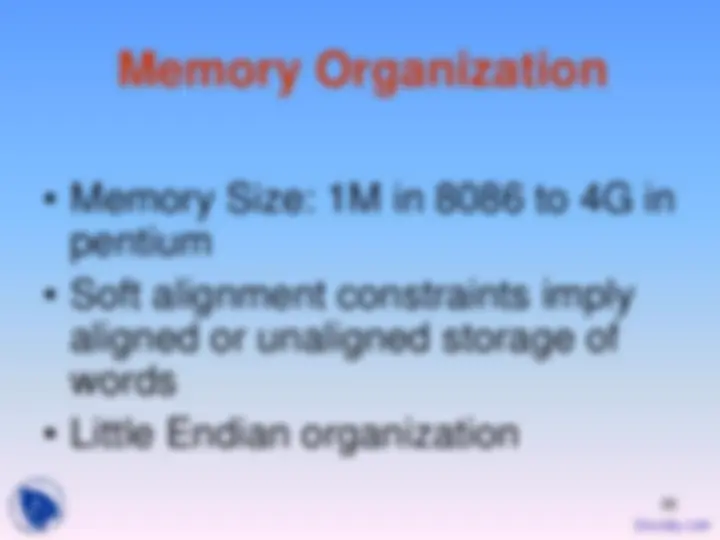
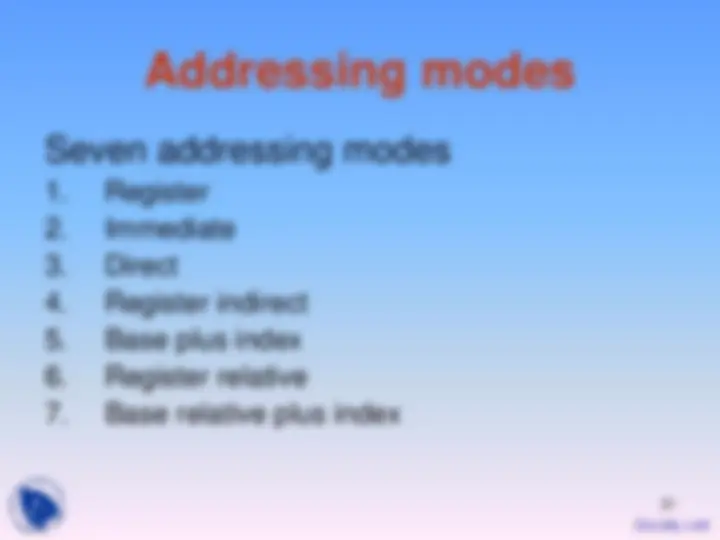
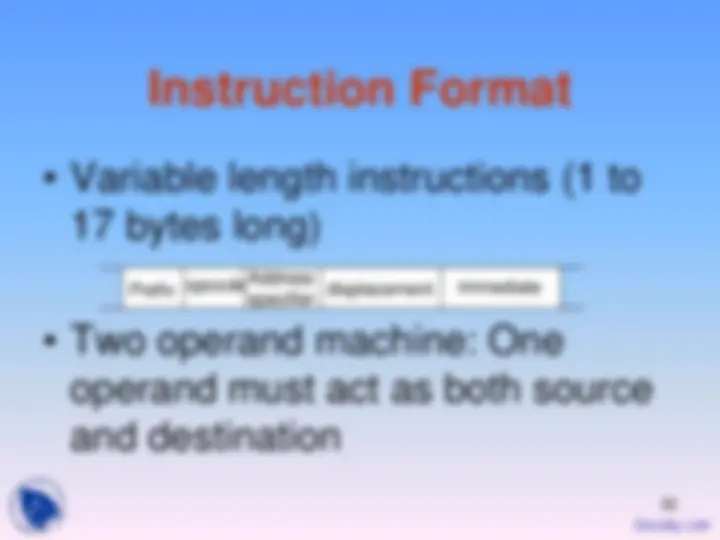
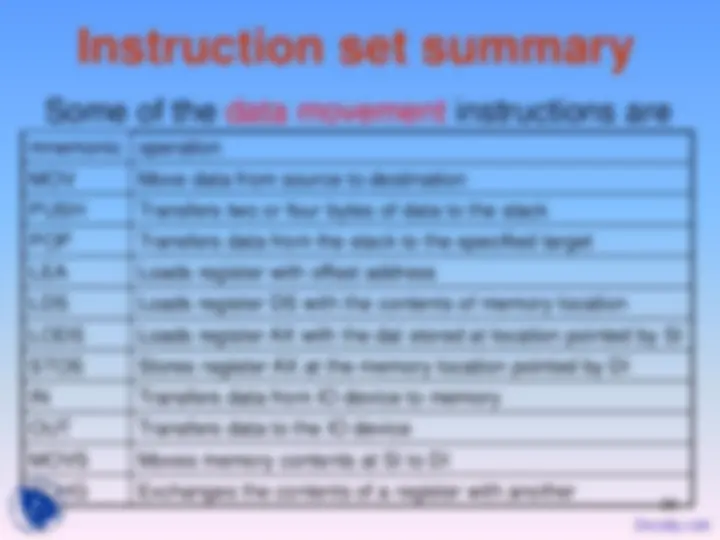
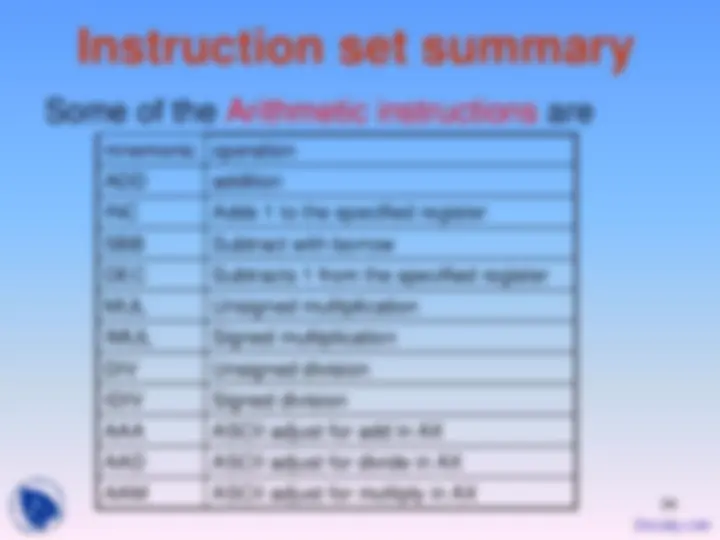
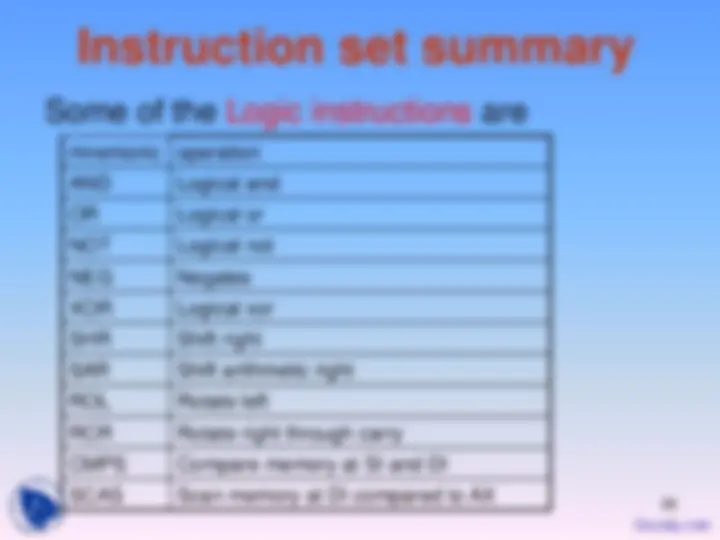



Study with the several resources on Docsity

Earn points by helping other students or get them with a premium plan


Prepare for your exams
Study with the several resources on Docsity

Earn points to download
Earn points by helping other students or get them with a premium plan
Community
Ask the community for help and clear up your study doubts
Discover the best universities in your country according to Docsity users
Free resources
Download our free guides on studying techniques, anxiety management strategies, and thesis advice from Docsity tutors
SPARC Registers, General purpose registers, Processor Status Register, Program Counters, Register Windows, Memory Organization, Addressing modes are the topics professor discussed in this class.
Typology: Slides
1 / 36

This page cannot be seen from the preview
Don't miss anything!





























1
2
Integer Registers
r
r
31 0
Floating Point Registers
r
r
31 0 nPC
(^31 )
(^31 )
(^31 )
(^31 )
(^31 )
(^31 )
PC
IR
Y
TBR
WIM
Multiply Step Register Trap base Register
Window Invalid mask
4
SPARC Register Window Mechanism
IN parameters Local registers OUT parameters
IN parameters Local registers OUT parameters
Current Window Pointer=N-
Current Window Pointer=N
save
restore
IN parameters
OUT parameters
Local registers
Current Window Pointer=N
r
r
Each window contains 32 registers, of which first 8 are global registers
r
r
Global Registers
5
SPARC processor are
7
SPARC Instruction formats
31 0 op displacement
29
(^310) op a cond op2 disp
(^2928 2524 22 )
op (^) rd op2 disp
(^310) op op3 rs1 rs
29 25 24 19 opf
(^18141354)
op (^) rd op3 (^) rs1 0 asi op (^) rd op3 (^) rs1 (^1) simm
rs
rd
8
10
SPARC Logic Instruction
mnemonic op op3 meaning
And 10 0s0001 AND and set cc if S=
Andn 10 0s0101 NAND and set cc if S=
Or 10 0s0010 OR and set cc if S=
Orn 10 0s0110 NOR and set cc if S=
Xor 10 0s0011 XOR and set cc if S=
Xnor 10 0s0111 XNOR and set cc if S=
Sll 10 100101 Shift left logical rs1 by opnd2 bits into rd
Srl 10 100110 Shift right logical rs1 by opnd2 bits into rd
sra 10 100111 Shift right arithmetic rs1 by opnd2 bits into rd
11
13
The Motorola MC
14
The Motorola MC
CPU Registers
16
Mc68000 are
17
MC68000 addressing modes
Addressing mode Notation Operand Location
Data register direct Dn Dn
Address register direct An An
Address register indirect (An) Mem[An]
Autoincrement (An)+ Mem[An];An ← An+WS
Autodecrement -(An) An←An-WS;Mem[An]
Based Disp16(An) Mem[An+disp16]
Based indexed short Disp8(An,Xnlo) mem{[An+Xnlo+disp8]
Based indexed long Disp8(An,Xn) Mem[An+Xn+disp8]
Absolute short Addr16 Mem[addr16]
Absolute long Addr32 Mem[addr32]
Relative Disp16(PC) Mem[PC+disp16]
Relative indexed short Disp8(PC,xnlo) Mem[PC+Xnlo+disp8]
Relative indexed long Disp8(PC,Xn) Mem[PC+Xn+disp8]
Immediate #data nil
Low order 16 bits of any data or address register
Any of D0-D7 or A0-A
D0-D
A0-A
19
Source effective address
Destination effective Any of the 8 address data registers
Any of the 8 data registers
Any of the 8 address registers
20
Arithmetic/Logic Instruction
mnemonic opcode operation operands Operand size ADD 1101rrrmmmaaaaaa dst←dst+src EA,Dn b,w,l SUB 1001rrrmmmaaaaaa dst←dst-src EA,Dn b,w,l CMP 1011rrrmmmaaaaaa Dst-src EA,Dn b,w,l CMPI 00001100wwaaaaaa Dst-imm data #data,EA b,w,l MULS 1100rrr111aaaaaa Dn ←Dnsrc EA,Dn l ←ww DIVS 1000rrr111aaaaaa Dn ←Dn/src EA,Dn l ←l/w AND 1100rrrmmmaaaaaa dst←dst^src EA,Dn b,w,l OR 1000rrrmmmaaaaaa dst←dst~src EA,Dn b,w,l EOR 1011rrrmmmaaaaaa dst←dst⊗src EA,Dn b,w,l CLR 01000010wwaaaaaa dst← 0 EAs b,w,l NEG 01000100wwaaaaaa dst←0-dst Eas b,w,l TST 01001010wwaaaaaa dst-0 Eas b,w,l NOT 01000110wwaaaaaa dst←!dst EA b,w,l
Mode field
Destination register number
Address specifier